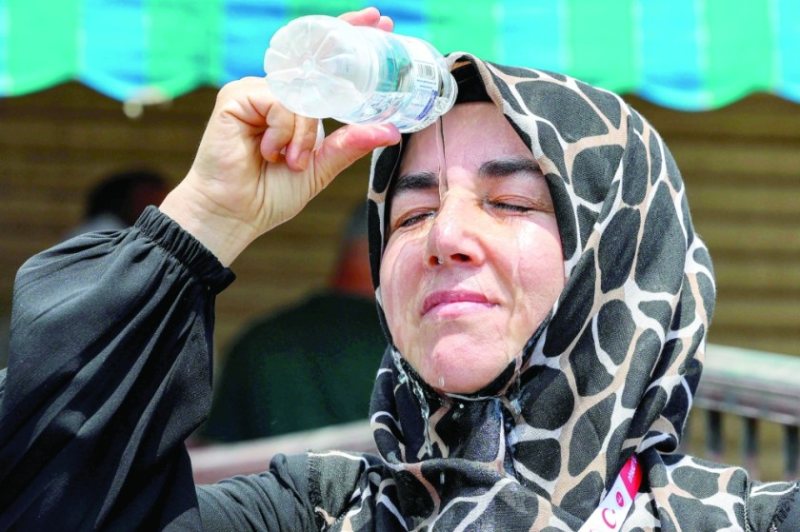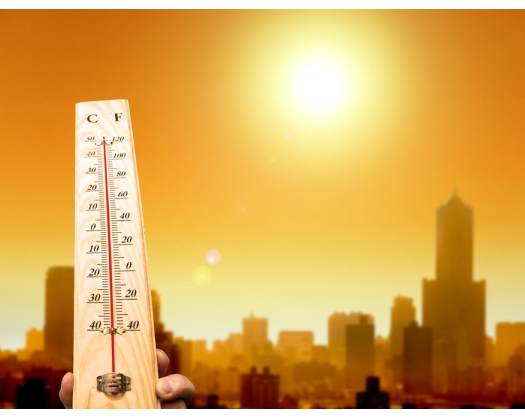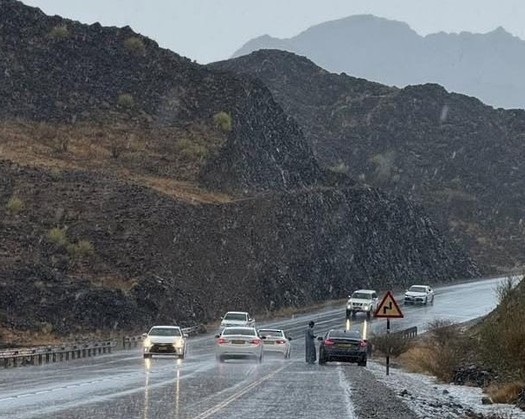LONDON: Cities across four continents are currently experiencing deadly heatwaves as the Northern Hemisphere welcomes the first day of summer. This serves as a clear indication that climate change may once again play a role in fueling unprecedented heat, potentially surpassing last summer as the warmest in the past 2,000 years.
Recent days have already witnessed record-breaking temperatures, which are believed to be responsible for hundreds, if not thousands, of deaths in Asia and Europe.
In Saudi Arabia, as nearly two million pilgrims conclude their Haj pilgrimage at the Grand Mosque in Mecca, reports from foreign authorities indicate that hundreds have tragically lost their lives due to temperatures exceeding 51 degrees Celsius.
Furthermore, countries surrounding the Mediterranean have endured scorching high temperatures for yet another week. These extreme conditions have contributed to devastating forest fires spanning from Portugal to Greece, as well as along the northern coast of Africa in Algeria, as reported by the US National Oceanic and Atmospheric Administration's Earth Observatory.
In Serbia, meteorologists are predicting temperatures of approximately 40ºC this week due to hot winds from North Africa sweeping across the Balkans. Health authorities have issued a red weather alert and are advising individuals to avoid going outside.
Belgrade's emergency services reported that doctors had to provide medical assistance 109 times overnight to individuals with heart and chronic health conditions.
In Montenegro, health authorities have also cautioned people to remain in the shade until late afternoon. Despite this, tens of thousands of tourists have flocked to the beaches along the Adriatic coast seeking relief from the heat.
Europe has been facing a series of incidents involving dead and missing tourists due to the extreme heat this year. On Monday, police in Greece reported that a 55-year-old American was found dead on the island of Mathraki, marking the third tourist death in a week.
Meanwhile, parts of the US Northeast and Midwest are experiencing scorching temperatures under a heat dome, with over 86 million people under a heat alert on Thursday, as per the National Weather Service.
A heat dome arises when a robust, high-pressure system confines warm air within a specific area, impeding the entry of cool air and resulting in elevated ground temperatures.

Counting The Dead
India experiences its summer season from March to May, during which the monsoons gradually make their way across the country, providing relief from the scorching heat.
However, on Wednesday, New Delhi recorded its hottest night in at least 55 years, as reported by India's Safdarjung Observatory. The temperature at 1 am reached 35.2ºC, which is unusually high for nighttime.
Typically, temperatures tend to drop during the night, but scientists attribute the rising nighttime temperatures to climate change. A 2020 study conducted by the University of Exeter revealed that nights are warming up faster than days in many parts of the world.
In New Delhi, the maximum temperatures have remained at or above 40ºC for 38 consecutive days since May 14, according to data from the weather department. This prolonged heatwave is a cause for concern and highlights the impact of climate change on the region.
Obtaining precise death counts caused by heatwaves is a challenging task. The majority of health authorities do not directly link deaths to heat, but instead focus on the underlying illnesses that are worsened by high temperatures, such as cardiovascular problems. As a result, heat-related deaths are often underestimated by a considerable margin, with thousands if not tens of thousands of fatalities being overlooked.

Record Warm Temperatures
The heatwaves are happening amidst a backdrop of 12 consecutive months that have been ranked as the warmest on record in year-on-year comparisons, as stated by the European Union's climate change monitoring service.
According to the World Meteorological Organization, there is an 86 percent probability that one of the next five years will surpass 2023 and become the warmest on record.
Although global temperatures have risen by approximately 1.3ºC above pre-industrial levels, climate change is contributing to more extreme temperature peaks. This, in turn, is causing heatwaves to become more frequent, intense, and longer-lasting.
On a global scale, a heatwave that would have occurred once every 10 years in the pre-industrial climate now happens 2.8 times over a span of 10 years. Additionally, it is 1.2ºC warmer, as reported by an international team of scientists from the World Weather Attribution (WWA) group.
According to Reuters, the World Weather Attribution (WWA) has stated that if the world continues to release climate-warming emissions from the burning of fossil fuels, heatwaves will persistently increase in intensity. The WWA further predicts that if global warming reaches 2ºC, heatwaves would occur approximately 5.6 times within a span of 10 years and be 2.6ºC hotter.
Graph Points
What is a heat dome
1. A heat dome forms when a powerful, high-pressure system traps warm air over an area, blocking the entry of cooler air and maintaining elevated ground temperatures.
2. There is an 86 percent probability that one of the upcoming five years will surpass 2023 to become the hottest on record.
3. A heatwave that used to happen once every 10 years in the pre-industrial era will now occur 2.8 times within a decade, with a temperature increase of 1.2ºC.
4. In the event of global warming reaching 2ºC, heatwaves would occur an average of 5.6 times in a decade and be 2.6ºC warmer.
5. Heatwaves are expected to worsen if the world continues to release climate-warming emissions from the combustion of fossil fuels.













